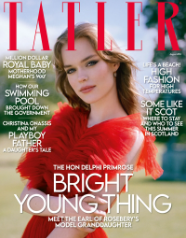Radio 1 Launch CSP
Historical, social and cultural contexts
1) What radio stations were offered by the BBC before 1967?
The BBC Light Programme,Third Programme,Home Service
2) How was BBC radio reorganised in September 1967? What were the new stations that launched?
BBC Radio 1:
- Focused on contemporary pop music.
- Aimed at a younger audience, focusing on the style and music selection of pirate radio stations.
BBC Radio 2:
- Replaced the BBC Light Programme.
- Continued to offer light entertainment, including easy listening music, comedy, and variety shows,going to a broader and slightly older audience.
BBC Radio 3:
- Replaced the BBC Third Programme.
- Focused on high culture, including classical music, jazz, drama, and discussions.
BBC Radio 4:
- Replaced the BBC Home Service.
- Concentrated on news, current affairs, drama, and spoken word content, aimed at a general audience
3) What was pirate radio and why was it popular?
Many of the pirate station DJs were then employed by BBC Radio 1, thus bringing many of the their loyal listeners with them. Commercial radio didn’t broadcast until 1973 so it had no competition. Radio 1 also developed better content more suitable to the target audience as it became more popular. In the 1970s and 1980s, Radio 1 became the most listened to station in the world with audiences regularly over 10 million.
Pirate radio stopped broadcasting in 1967 because The British government legislated against pirate radio stations, making their broadcasts illegal.
5) How did the BBC attract young audiences to Radio 1 after pirate radio stations were closed down?
The BBC had attracted young audiences to Radio 1 after pirate radio stations were closed down by that many of the pirate station broadcasters were then employed by BBC Radio 1,this bringing many of their loyal listeners with them.
6) What was 'needle time' and why was it a problem for BBC Radio?
Needle time is meant they could only play five hours of music per day. This was a problem for BBC Radio because they would not get a much of an audience and attract more attention due to the time limit. It also was there to restrict the amount of recorded music that could be transmitted by the BBC during any 24-hour period
7) How did BBC Radio 1 offer different content to previous BBC radio stations?
BBC Radio 1 offer different content to previous BBC radio stations by it provides a useful point of contrast with modern radio stations that can be online / niche / youth-orientated / available on a number of different platforms. It also offered music that was more fun rather than listening to the news which is more boring and political.
8) Who was the first presenter for BBC Radio 1 and why did these new Radio 1 DJs cause upset initially at the traditional BBC?
The first presenter for BBC Radio 1 is Tony Blackburn and new Radio 1s DJS was upset at the traditional BBC because there was not much rebellion involved to make it 10 times more fun, enjoyable for young audiences such as teenagers.
9) Listen to excerpts from the Tony Blackburn's first 1967 broadcast - how might it have appealed to young listeners?
It might have appealed to young listeners because it was seen as more popular, trendy in the introduction that many young people feel like they would pay attention to more and listen more instead of not paying attention. It just grabs your attention
to the music and the DJ.
10) How was Tony Blackburn's radio show more like pirate radio rather than traditional BBC radio content?
Tony Blackburn's radio was more like pirate radio rather than traditional BBC radio content as it was more Blackburn's show focused on contemporary pop and rock hits, catering to youth tastes, unlike the BBC's playlists.
Audience and industry
1) What was the target audience for BBC Radio 1 in 1967?
The target audience for BBC Radio 1 in 1967 is young people who were listening to pirate radio. Now, the BBC Radio 1 target audience is 15-29 year olds but they are struggling to attract these listeners. The median age for a Radio 1 listener is 32 and only 41% of the audience today are aged between 15-29.
2) Why did Radio 1 initially struggle to attract young listeners?
Radio 1 initially struggle to attract young listeners because It was not seen as cool by many young people. It also struggled financially as there was no increase in the licence fee to pay for this extra radio station.
2) Why did Radio 1 initially struggle to attract young listeners?
Radio 1 initially struggle to attract young listeners because It was not seen as cool by many young people. It also struggled financially as there was no increase in the licence fee to pay for this extra radio station.
3) What audience pleasures did Radio 1 offer listeners in 1967? (Use Blumer and Katz Uses and Gratifications theory).
Audience Pleasures
Audience Pleasures
Personal Relationships- As the audience can relate to Tony Blackburn as he seems like he is bubbly, kind like a friend as he is not serious, boring and also rebellious which quite some young teens admire and find entertaining.
Surveillance-It keeps listeners to keep listening and enjoying the content that they create which is music and free for everyone to watch it in their own time. It could also be anywhere.
4) How is the BBC funded
The BBC is funded by how much the UK charges for a TV license.
5) Applying Stuart Hall's Reception theory, what would the preferred and oppositional readings have been for BBC Radio 1 in 1967?
Preferred readings-New music that they have played that attracted younger audiences and that was popular.
Oppositional readings-That most of the young people listen to their music.


Comments
Post a Comment